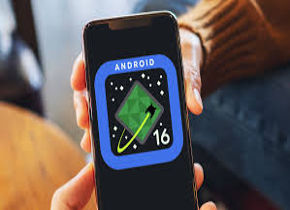The Ultimate Guide to Creating a High Performing Social Media Content Calendar. Creating a social media content calendar is essential for building a strong, consistent, and organized social media presence. A well-structured calendar not only streamlines content creation but also helps increase engagement, attract new audiences, and achieve your social media goals. This guide will help you create a content calendar that works efficiently for you, covering key components, actionable steps, and best practices.
The Ultimate Guide to Creating a High Performing Social Media Content Calendar
Why a Social Media Content Calendar is Important
- Consistency: Keeps your brand consistently visible to your audience.
- Improved Organization: Helps organize ideas and streamline content creation.
- Performance Tracking: Allows you to track what content performs best.
- Efficiency: Reduces the last-minute scramble to create content.
- Goal Alignment: Ensures content aligns with overall marketing objectives.
Key Components of a Social Media Content Calendar
1. Goals and Objectives
Define the purpose of your social media strategy. Typical goals include:
- Brand Awareness: Increasing brand visibility.
- Engagement: Boosting likes, shares, and comments.
- Lead Generation: Converting followers into potential customers.
- Sales: Directly driving sales through promotional content.
2. Audience Insights
Understand your target audience’s preferences, including:
- Demographics: Age, location, interests.
- Platform Preferences: Which platforms they use most.
- Content Preferences: Types of content they engage with (e.g., video, infographics).
3. Content Themes and Topics
Select themes that resonate with your audience and align with your brand. Examples:
- Educational: Tips, how-tos, tutorials.
- Promotional: Product highlights, discounts.
- Entertaining: Fun posts, quizzes, or engaging questions.
4. Content Types
Diversify your content types to keep your audience engaged:
- Posts: Photos or graphics with engaging captions.
- Stories: Short-lived content perfect for behind-the-scenes.
- Videos: Tutorials, product demos, or live Q&A sessions.
- Articles: In-depth, informative pieces for platforms like LinkedIn.
- Infographics: Visual data or information.
5. Publishing Schedule
Decide how often to post on each platform. Common frequencies include:
- Instagram/Facebook: 3-5 times per week.
- Twitter: Multiple times daily.
- LinkedIn: 1-2 times per week.
6. Platform-Specific Plans
Each social platform has unique formats and best practices. Customize your approach:
- Facebook: Great for community building and engagement.
- Instagram: Visual storytelling, especially with Reels and Stories.
- Twitter: Fast, real-time updates; best for news and trends.
- LinkedIn: Professional insights, company updates, and articles.
7. Key Dates and Events
Include relevant dates to keep your content timely:
- Holidays: National and international holidays.
- Brand Events: Product launches, anniversaries, or special campaigns.
- Industry Events: Conferences or trending topics within your industry.
8. Content Creation and Curation
Plan how to create or source content:
- In-house Creation: Original photos, videos, or graphics.
- Curated Content: Re-shared relevant content from influencers or brands.
- User-Generated Content: Content created by followers, showcasing authentic brand advocacy.
9. Approval Process
Set up a review process to ensure content quality:
- Editor Review: Proofread for grammar and relevance.
- Approval by Key Stakeholders: Confirm content aligns with brand goals.
10. Analytics and Metrics
Track performance metrics to optimize future content:
- Engagement Rate: Likes, comments, shares.
- Reach and Impressions: Number of people who saw the post.
- Conversion Metrics: Link clicks, sign-ups, or purchases.
Steps to Create a Content Calendar
1. Choose a Tool
Select a tool that makes organizing content easy and accessible:
- Google Sheets: Simple and easy to use for collaborative teams.
- Trello/Asana: Visual task boards with assignment features.
- Social Media Management Platforms: Tools like Buffer, Hootsuite, or Later for automated scheduling.
2. Set Up the Calendar
Design the calendar format that best suits your team:
- Monthly View: For long-term planning and tracking trends.
- Weekly View: For detailed, day-by-day planning.
3. Identify Content Pillars
Define main categories for content to help organize ideas:
- Educational: Useful information or tips for followers.
- Promotional: Product highlights, special offers.
- User-Generated Content: Showcase customer testimonials or user photos.
4. Fill in Content Ideas
Populate the calendar with specific ideas for each category:
- Brainstorming Sessions: Regularly meet with your team to refresh ideas.
- Monitor Trends: Include trending topics or relevant hashtags.
5. Assign Responsibilities
Assign team members to specific tasks to ensure accountability:
- Content Creation: Task designers, writers, or video editors.
- Content Curation: Appoint someone to source external, relevant content.
- Scheduling: Dedicate a person to publish or schedule each post.
6. Schedule Content
Plan specific dates and times for each post to ensure consistency:
- Best Time to Post: Determine when your audience is most active on each platform.
- Content Balance: Avoid overloading any one type of content or theme.
7. Add Details and Assets
Include all necessary details for each post:
- Captions: Write engaging, concise captions with clear calls-to-action.
- Hashtags: Use relevant hashtags for increased reach.
- Links: Trackable links for promotions or product pages.
- Visuals: Images, videos, or graphics ready for publishing.
8. Review and Adjust
Regularly analyze the calendar and adapt based on performance:
- Weekly Review: Look at metrics and adjust upcoming content as needed.
- Monthly Insights: Use monthly reports to identify trends and areas for improvement.
Example Content Calendar Layout
Here’s a sample layout for a social media content calendar:
| Date | Platform | Content Type | Theme/Topic | Caption | Assets | Status |
|---|---|---|---|---|---|---|
| Jan 1 | Post | New Year’s Greetings | “Happy New Year! 🎉 Here’s to new beginnings.” | Image: New Year | Scheduled | |
| Jan 2 | Video | Product Launch | “Check out our latest product launch! 🚀” | Video: Product Demo | In Progress | |
| Jan 3 | Tweet | Customer Testimonial | “We love hearing from our happy customers!” | Link: Blog Post | Approved | |
| Jan 4 | Article | Industry Insights | “Discover the latest trends in our industry.” | Link: Article | Draft |
Best Practices for Maintaining Your Content Calendar
- Regular Updates: Keep your calendar current with fresh ideas.
- Stay Agile: Be ready to adjust for trending topics or breaking news.
- Focus on Quality Over Quantity: Prioritize valuable content over posting more often.
- Engage with Your Audience: Don’t just post – respond and interact with comments and messages.
- Analyze and Optimize: Use data to see what resonates and refine your strategy.
Conclusion
A well-planned social media content calendar is key to boosting your brand’s online presence. By setting clear goals, organizing content themes, and tracking performance, you can engage your audience effectively. The calendar streamlines the content creation process and ensures your brand voice remains consistent across platforms. Use this guide to create a calendar that aligns with your marketing goals, drives engagement, and builds a loyal following. Start planning today and watch your social media reach grow!




